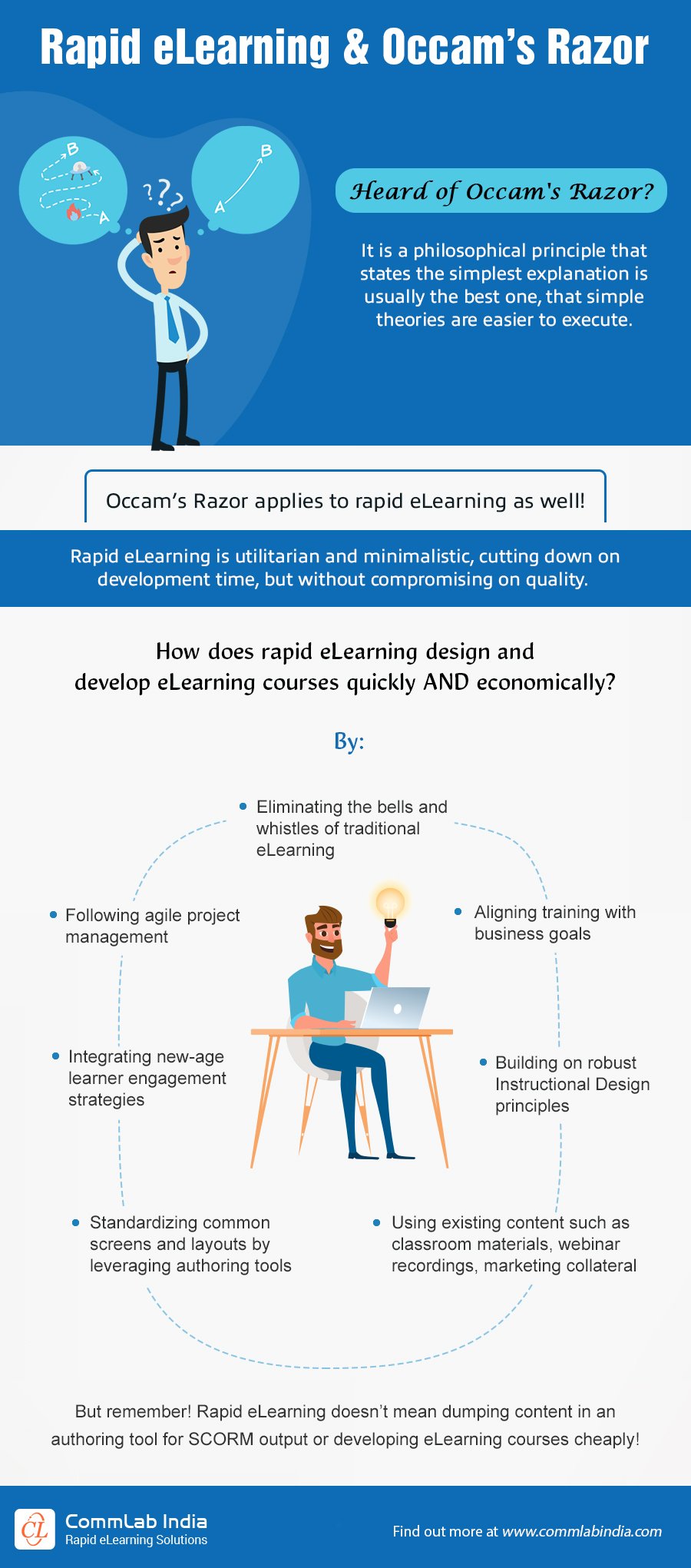Rapid eLearning and Occam’s Razor [Infographic]
![Rapid eLearning and Occam’s Razor [Infographic] Rapid eLearning and Occam’s Razor [Infographic]](https://blog.commlabindia.com/hubfs/Imported_Blog_Media/rapid-elearning-occam-razor-infographic.png)
Looking at improving sales, efficiency levels, and adherence to compliance in your organization? Look no further than rapid eLearning! Opting for rapid eLearning development can help you save more on your training budget – almost 50% to 70% more as compared to traditional classroom training.
What makes rapid eLearning a smart investment is that it is guided by the Pareto’s principle which states that 80% of results come from 20% of efforts. You are probably aware of this, but did you know that rapid eLearning is also linked to the principle of Occam’s razor?
Explore rapid eLearning in a nutshell.
For the uninitiated, Occam’s razor, also known as ‘law of parsimony’, is a problem-solving principle which conveys that the simplest explanation is most probably the right one. This line of reasoning is used to slice through a problem and eliminate unnecessary assumptions.
For example, healthcare professionals use it determine an illness after analyzing symptoms, and detectives use it to narrow down on suspects. It’s interesting to note that L&D professionals can use this principle to narrow down on the choice of training solution.
When you need to get time-critical training out to your employees, or are considering a budget-friendly solution, rapid eLearning development is the answer. To know more about the application of Occam’s razor in rapid eLearning, check this infographic.
Wrapping it up!
Remember that not all training challenges need complex solutions. Something as minimalistic as rapid eLearning, without the frills and fancies associated with glitzy eLearning courses can provide the best remedies for your training challenges.
To break the barriers of time, speed, and cost in corporate training, check this handy eBook on rapid eLearning development, designed exclusively for training managers and L&D professionals.





![Coherence Principle and E-Learning [Infographic]](https://blog.commlabindia.com/hubfs/Imported_Blog_Media/116-tips-elearning-design-development.jpg)
![Edutainment through Gamified Assessments [Infographic]](https://blog.commlabindia.com/hubfs/Imported_Blog_Media/elearning-assessments-gamified.jpg)
![How to Use the Principles of Adult Learning in eLearning [Infographic]](https://blog.commlabindia.com/hubfs/Imported_Blog_Media/adult-learning-principles-elearning-infographic-v2.jpg)